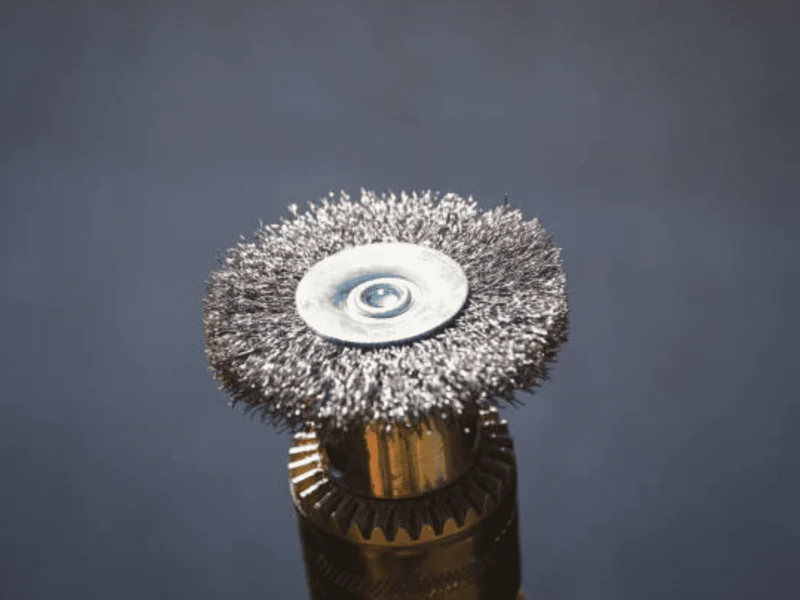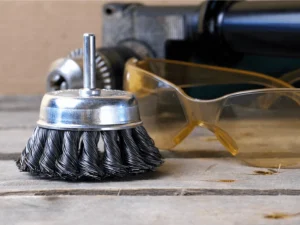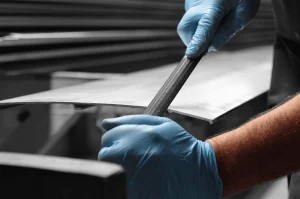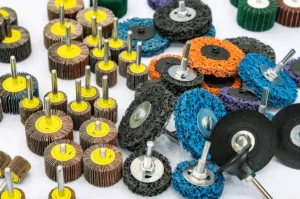
Abrasive brushes are widely used to finish surfaces. The abrasive tools used for brushing can create perfect finishes on uneven surfaces, resulting in a beautiful brushed metal finish. There are several forms of brushing finish that can be adapted to a broad range of applications. The abrasive brushes are high performance and are capable of producing an exceptionally smooth finish on even the most irregular surfaces. If a product needs a premium finishing touch, then the abrasive brush is the answer to your problem.
What is the brushing finish process? What are the different types of brushed metal finishes? And what are the applications of brushed finishing? We will answer all of these questions in the following paragraphs.
Table of Contents
Brushing Finish Process

The metal brushing finish process begins by cleaning the metal surface to be finished. The surface is then sanded with fine-grit sandpaper to remove any scratches or blemishes. Next, a metal brush is used to apply the desired finish to the metal surface. The metal brush is moved in a circular motion to get the desired results. Finally, the surface is rinsed to remove any metal residue.
The metal brush can be used to apply a variety of finishes such as polished metal, chrome and nickel plating, brushed aluminum finishing, steel brushing, and more. The thickness of the finish applied depends on the type of metal being polished and the desired results. The metal brushing process is also known as a mechanical polishing process.
There are many types of metal brushes available on the market. For instance, most metal finishing tools have either a round or rectangular shape, and their sizes vary from one another. Additionally, some metal finishing tools feature synthetic bristles, which are long and thin to provide high surface contact. Such synthetic bristles produce even polished finishes, making them an excellent choice for metal polishing jobs.
Brushed Metal Finishes
Brushed metal finishes are created when a metal is rubbed with an abrasive material to create a textured surface. This finish can be used on a variety of metals, including aluminum, steel, and more.
A brushed metal finish is ideal for creating real industrial-looking surfaces. It is commonly (but not exclusively) used on walls or large objects to create a sense of strength.
Steel Brushing Finish

A steel brushing finish is a type of metal finishing that is achieved by using a special brush to abrade the surface of the metal. This type of finish is often used on steel parts to give them a more durable and corrosion-resistant finish. While steel bristle brushes are the most common tools used for this type of finish, other types of brushes can be used as well. These include metal wire wool and fiber brushes. In some cases, a metal polishing wheel can be used to achieve a similar effect.
Brushed Aluminium Finishing

Brushed aluminum is a type of metal finishing that gives a brushed or sandblasted appearance to objects made from aluminum. It is created by mechanically abrading the surface of the aluminum with an abrasive brush. The result is a smooth surface with the appearance of having been sandblasted. The brushed aluminium finishing process can be used on aluminum products ranging from fabricated frames to car bumpers. It is usually done on large-scale production runs, making it a type of mass finishing.
Satin VS Brushed Finish
An often asked question is whether the brushed finish is the same as the satin. The difference between the two is that a satin finish has a slightly glossy appearance, while a brushed finish has a matte appearance. Manufacturers should use a satin finish if they want the product to have a slight sheen and a brushed finish if they are looking more for a textured look. There are pros and cons to both finishes, so it is important to look through all the options before making a final decision.
Applications of Brushed Finishing
Brushed finishing can add a touch of elegance and sophistication to a variety of projects, and it can also help to protect the surface from scratches and other damage. The technique is typically used in a variety of applications, of which we can find:

- Deburring: is the process of removing sharp edges and burrs from a metal surface. This is done with brushes used for metal finishing or special CNC deburring brushes. As well as removing sharp edges, the deburring process is also used to prevent rust and corrosion on metal parts.
- Edge blending: Another application of brushing finish is to smooth out the transition between two different surfaces. This is often done to make the edge look more uniform and to prevent it from catching on things. Using the brushing finish technique works best for creating sharp, crisp edges.

- Cleaning: The abrasive brush is very effective in removing dirt, film, rust, weld slag, and other contaminants from a surface.
- Roughning: The brushing finish can also be applied to creating roughened surfaces. The roughening leaves less surface area to catch dirt and debris and is easier to clean.
CNC Deburring Brushes

CNC deburring brushes are used to remove burrs and other surface defects from metal parts. They are typically mounted on a CNC machine, and the operator uses them to touch up parts that have been machined. The deburring process is crucial for manufacturing clean parts.
The deburring brush for CNC works by removing material from the part. It is used to make small imperfections on parts disappear so that finished parts will be more saleable. The operator maneuvers the brush in a drilling motion. The part is rotated while the brush automatically regurgitates material and ejects it from the part. This action keeps the part from becoming too burred and smooths the surface. This is why deburring is important to precision manufacturing processes.

